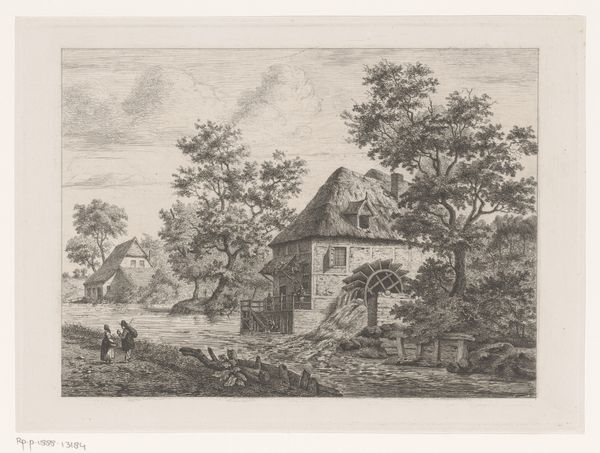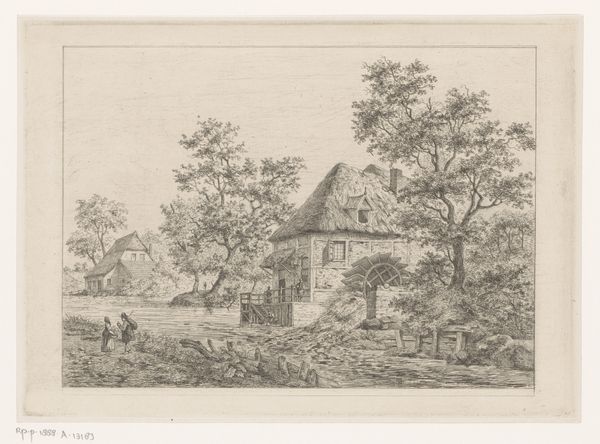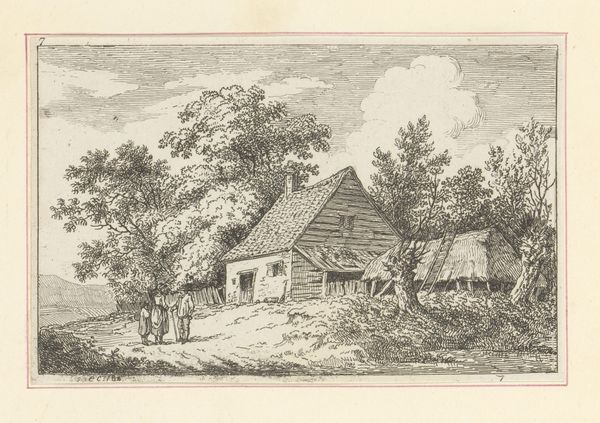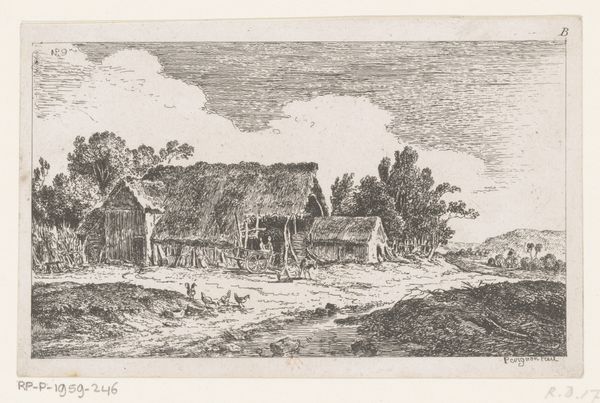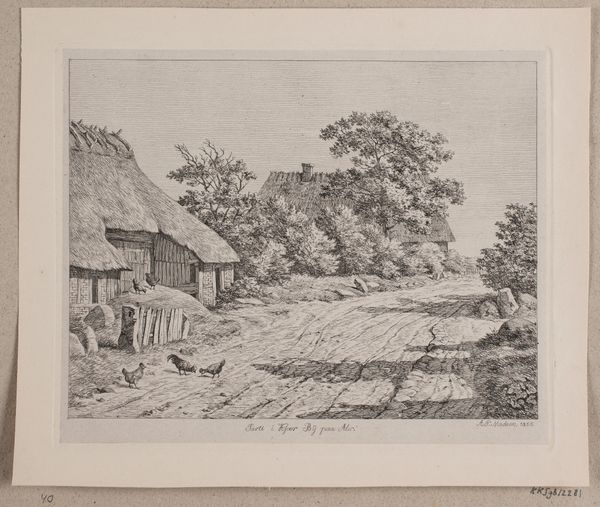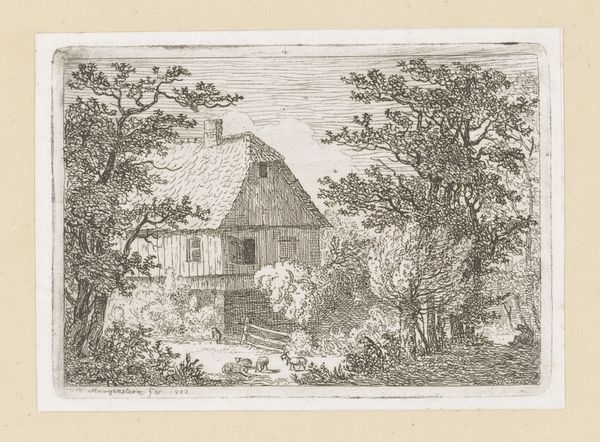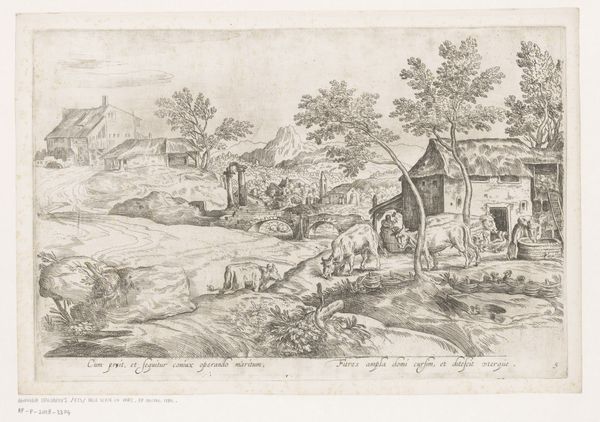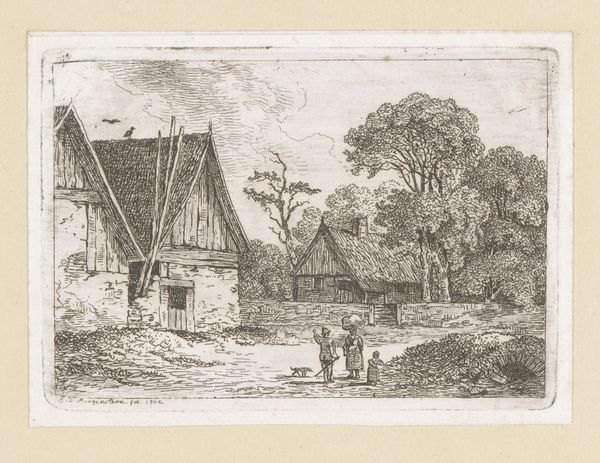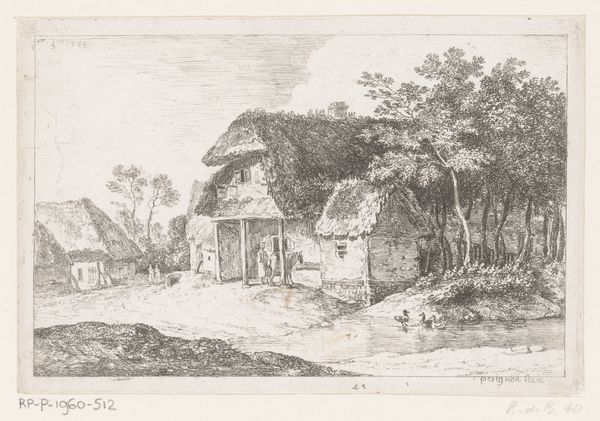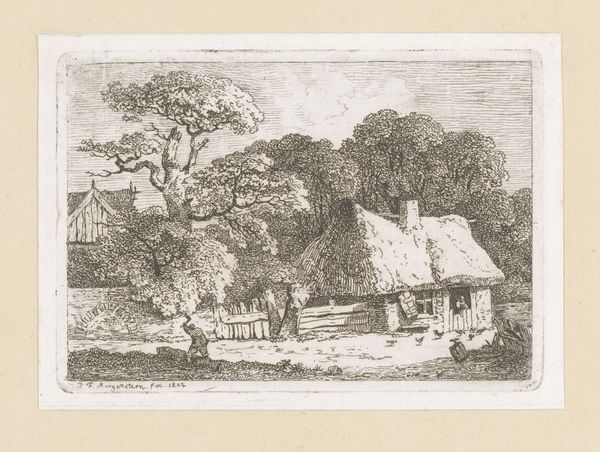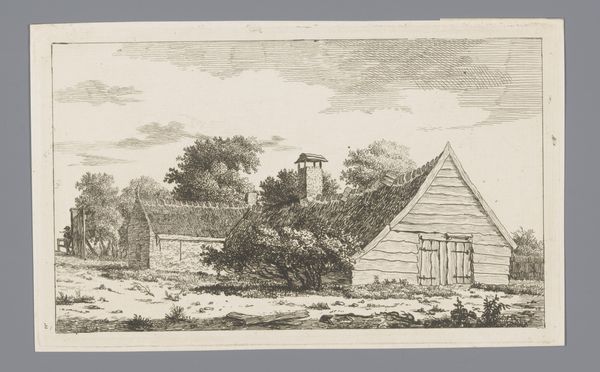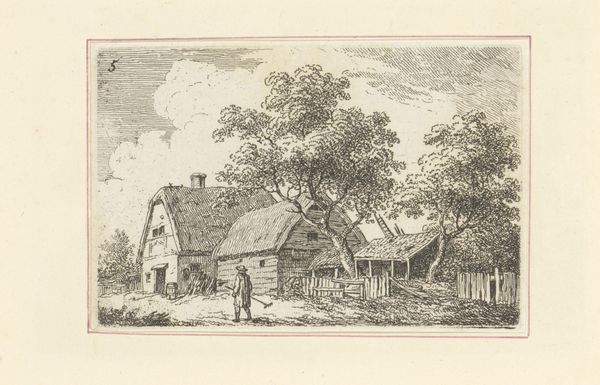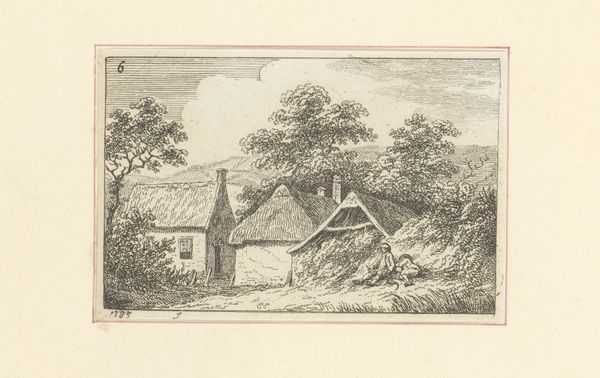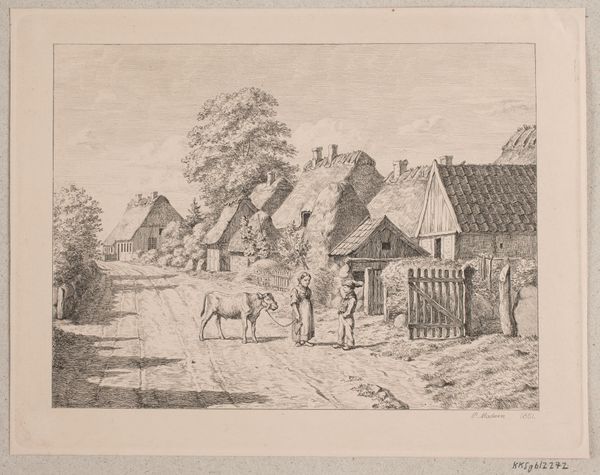
print, etching, engraving
#
16_19th-century
# print
#
etching
#
landscape
#
etching
#
genre-painting
#
engraving
Dimensions: 165 mm (height) x 214 mm (width) (bladmaal)
Editor: This is A.P. Madsen's "Udkanten af Kjær by på Als" from 1855, done as an etching. It feels incredibly detailed, capturing a humble countryside scene. What do you see in this piece, beyond the literal depiction? Curator: What strikes me is the depiction of rural life being presented and consumed as art. Consider the social context; during the mid-19th century, there was a growing urban population, alongside industrialization. Images like these catered to a burgeoning interest in the idealized countryside and folk culture. Does this suggest a type of cultural documentation, a construction, or even perhaps a nostalgic projection by urban audiences? Editor: I never thought of it that way. So, this isn’t just a pretty picture of a village, but a statement about how society was changing and what people valued or yearned for? Curator: Precisely. The etching medium itself is important; it allowed for mass production and wider distribution of these images. Landscape, especially with such detail on quotidian life as chickens milling about, was made more accessible to wider segments of the population, helping disseminate certain cultural values. Do you think this would be displayed for the privileged or broader audiences? Editor: Given the print medium, perhaps to broader middle class audience, it also hints at educational and nation-building purposes, by shaping people's idea about the landscape they belong to. I see it now. Curator: And notice how even the choice of subject - a common village - can be a form of art patronage supporting and shaping perceptions about everyday life. Food for thought about the narratives behind visual pieces and where those values originate.
Comments
No comments
Be the first to comment and join the conversation on the ultimate creative platform.
